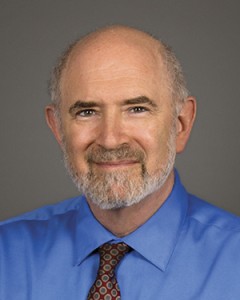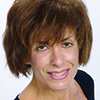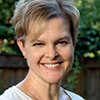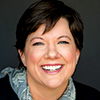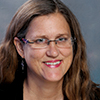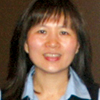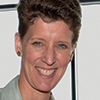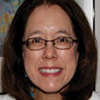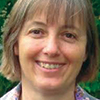Women in Statistics
A number of recent news articles have described the relatively high levels of involvement by women in our profession, a level notably higher than other STEM areas. Editorials suggest this success is showing the way for others. The percentage of faculty in statistics departments that are women is higher than math, science, or engineering. The percentage of statistics degrees granted to women, likewise, is larger.
Francine Knowles of the Chicago-Sun Times wrote, “Data scientists are among Glassdoor’s 2015 top 10 hottest professions. The career requires a love of statistics, which women have found attractive.”
Journalists have contacted the ASA to explore this issue, and some of them asked me to discuss it with them. Their most common question was, “Why?”
While I have my own views, it seemed best to ask a panel of female colleagues (see The Panel) so I could refer to their particular experiences should journalists raise this issue in the future.
I asked these colleagues three questions: Why they decided on statistics as a career, why they thought other women chose it as a career, and how the ASA can make its community more welcoming to women and minorities. The following are their responses.
Why did you decide on statistics as your profession?
Almost all replied that they recognized they were good in math. Some realized they could do a double major to include statistics with only a few additional courses.
The Panel
Marie Davidian Former ASA president; William Neal Reynolds Distinguished Professor of Statistics, Department of Statistics, North Carolina State University
Sylvia Dohrmann Steering committee chair for the 2015 Conference on Statistical Practice; senior statistician, Westat
Mary Kwasny Council of Chapters–ASA board representative; associate professor in preventive medicine-biostatistics, Northwestern University Feinberg School of Medicine
Cyndy Long Council of Sections–ASA board representative; professor and director of research, Palmer College of Chiropractic; director, Office of Data Management & Biostatistics, Palmer Center for Chiropractic Research
Wendy Lou Council of Chapters–ASA board representative; professor of biostatistics and statistics, school of public health, University of Toronto
Sally Morton Former ASA president; professor and chair, biostatistics, University of Pittsburgh
Jeri Mulrow ASA vice president; deputy division director, National Center for Science and Engineering Statistics, National Science Foundation
Anna Nevius Council of Sections–ASA board representative; Food and Drug Administration (retired)
Jessica Utts ASA president-elect; chair, department of statistics, University of California, Irvine
Marie Davidian: There was a statistics class (taught out of Box, Hunter, and Hunter) offered by Dave Harrington, who was a brand new assistant professor. I absolutely loved it, and that was that!
Sylvia Dohrmann: From the auditorium balcony of the statistics course, I learned that statistics was a practical application of math that made sense and seemed to apply to a variety of fields. I changed my major before the semester was over.
Mary Kwasny: I was a math major. To some extent, I felt I had to prove myself (no pun intended), in my first few classes. While I liked that challenge as a college freshman, looking back, it wasn’t right; had I not been stubborn and competitive, I may have changed majors. … Statistics can be used in so many fields.
Cyndy Long: I knew nothing about statistics as a science or career, but the adviser I met with pointed out that I could easily double major in it, so I did. I was fortunate to be offered a semester-long internship in the department of biostatistics at the Mayo Clinic. That is what hooked me!
Wendy Lou: I also enjoy collaborating with experts in diverse fields and like to study ideas from other disciplines. I pursued a career in academia so that I can continue to learn and be involved in interesting research projects, while passing on my knowledge through teaching.
Sally Morton: Because I wanted to have an impact on problems that mattered to me like those in health and education, and I thought I would do best in a career in which interdisciplinary communication was valued.
Jeri Mulrow: I did not like my first statistics course and promptly sold back my introductory statistics textbook! Fortunately, I continued on to take regression analysis, analysis of variance, and design of experiments. I was hooked.
Anna Nevius: I liked math, but wanted something not so abstract. Statistics provided that for me.
Jessica Utts: I noticed that I could do a double major by adding just six additional courses, so that’s what I did. The only course that overlapped the two majors was the statistics course in the psych department—there were no stat courses in the math department back then—so I decided to go to graduate school in statistics.
Why do you think other women choose statistics as their profession?
A common theme in their replies was that women enjoyed collaborative work and wanted a career that could improve lives.
Marie Davidian: The opportunity to put skills to work in, for example, health sciences research, where the goal is to find better treatments and improve lives, seems to be compelling to many women.
Sylvia Dohrmann: They were good in math, decided on a math-related major in college, and then found themselves in a core-level statistics course that simply made sense.
Mary Kwasny: Women are more likely to work together. Many women tend to be problem-finders and problem-solvers.
Cyndy Long: I think many of my female peers in graduate school (1) saw that there were many job opportunities in industry and (2) felt that they would be able to create better career flexibility facilitating the ability to balance a career with having children than in many other career paths.
Wendy Lou: They enjoy interacting with people in other fields, and that they can contribute to a variety of interesting research problems.
Sally Morton: A strong “sisterhood” of senior women, both historically (Gertrude Cox!) and currently (many women mentors) who formed a strong bond across the generations. Statistics is a very welcoming and generous profession—for and by both women and men.
Jeri Mulrow: They like to solve puzzles or problems, work in teams, and produce results. The statistics profession allows us to do just those things. We have the opportunity to collaborate with many different types of researchers in a variety of fields. We work on interesting and challenging problems, and we see the results of our work.
Anna Nevius: I also think that, along the way, the Caucus for Women in Statistics provided mentoring for many women.
Jessica Utts: My guess is that women are more likely than men to be particularly attracted to majors that have a human component. So women who excel in math see statistics as the most attractive option.
What can the ASA do to make our community even more welcoming to women and minorities?
Several women commented on the gender of the speakers at the plenary sessions, whose faces appear in the program, and the gender of the award winners. More mentoring was suggested, as well as the use of ambassadors to reach out to public schools, undergrad programs, and nations in which women less frequently are found in math and stat programs.
Marie Davidian: If there were more women and minority award winners, more plenary speakers who are women/minorities, that would make the ASA more attractive to these groups. Journals are another visible item. My impression (having not looked at the data, so I could be reflecting the popular impression out there) is that editorships have been a bit male dominated across all statistics journals, and certainly there has been a dearth of minorities.
Sylvia Dohrmann: I didn’t get a lot out of my membership until I joined Westat and saw how my peers and supervisors valued the organization and participation in it. Perhaps we should be considering more peer-to-peer and employer promotion of the association (not just employers of large numbers of statisticians).
Mary Kwasny: I think there does need to be more awareness at JSM. Many of the keynote speakers are male. And those headshots are everywhere. Perhaps more high-school and college statistical awareness camps would be something?
Cyndy Long: The best thing the ASA can do is directly related to the mentoring program initiatives currently underway: facilitate women (or minorities) to find mentors who are women (or minorities). I really love the This is Statistics campaign and think it will make a lot of difference to girls contemplating their future!
Wendy Lou: Send female or minority ambassadors to high schools to inspire students to become statisticians. Such ambassadors could also travel internationally to countries where women face greater discrimination. For graduate students in statistics-related fields, the ASA could host roundtable discussions during which ambassadors could share with students relevant experiences regarding women and minorities.
Sally Morton: We have to welcome and embrace diversity, not only because it’s the right thing to do, but also because our future depends on it. Take notice of the paucity of women receiving the top awards, continue to take stock of statistics like women on committees, and improve outreach. Basically, the profession needs to stand up and be counted. Continue to put the goal of diversity, on both gender and race grounds, front and center in the strategic plan, presidential initiatives, etc.
Other Perspectives
You can find valuable and interesting perspectives from others as well, particularly in two articles that appeared in CHANCE.
In “Two Perspectives on Celebrating Women in Statistics,” Jane Harvill provides the perspective of a professor and Kristen Tecson provides that of a student.
In “Know Your Power: A Panel Discussion by Past and Future ASA Presidents,” a discussion is summarized between female ASA presidents who served as panelists at the first Women in Statistics conference.
Jeri Mulrow: More formal, smaller networking opportunities across the country, both within academic departments and within local chapters, with the specific goal of reaching out to women and minorities and asking them to participate, spreading the mentoring program around.
Anna Nevius: Invited talks at the Joint Statistical Meetings. Of the 10 featured speakers and lecturers, only one is a woman.
As an association and a profession, we’ve come a long way since 1944, when Helen Walker became the first female president of the ASA. We have taken many positive and supportive steps to be open and welcoming to all statisticians and statistical researchers—regardless of gender, race, or sexual orientation—and it’s a journey that needs to continue.
I’ll give the last word to Erica Groshen, commissioner of the Bureau of Labor Statistics, who wrote, “We … strongly believe that guiding more women into careers in science and math is essential. It’s good for women and their families because there are so many new, exciting, and rewarding opportunities in this field. And our whole economy will benefit as more talented women participate fully in these innovative activities.”

